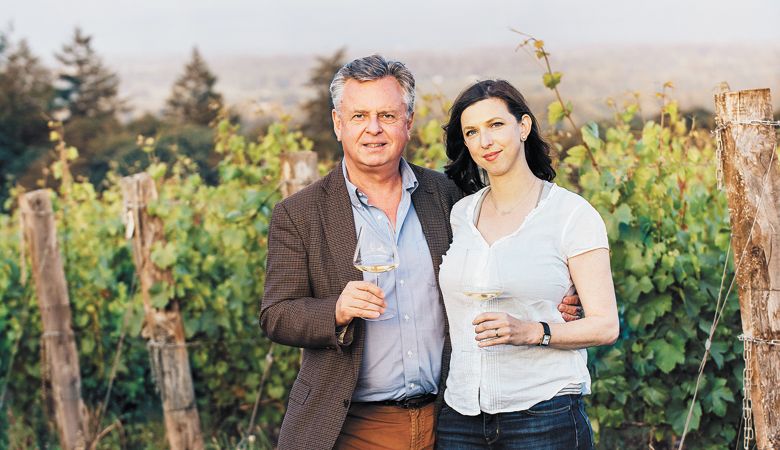Survive, Advance
Harvest plans and business models evolve
By Paul Omundson
As August rolls into September, the Oregon wine industry faces one of its toughest challenges to date: harvest amid a pandemic.
Battle-tested from the spring lock-down and gradual reopening over the last couple months, vineyards and wineries have adapted and cautiously prepared. Effective means to greatly minimize risk, such as face coverings, distancing protocols and stringent sanitary precautions, also apply during harvest. Additionally, vineyards will double the number of portable bathrooms and washing stations; rest areas, tents and other employee gathering places will be sanitized three times a day.
A dwindling labor pool?
Labor shortages have consistently plagued Oregon harvests. “But this year, because of the virus, there’s more uncertainty,” said Elin Miller, co-chairman of the Oregon Wine Council. She and her husband, Bill, are owners of Umpqua Vineyards and Umpqua Nut Farm. “We’ve been working closely with the groups that bring laborers here,” she explained. “We want them to know safety and health of workers are the key concerns going into this harvest. All aspects of a farm worker’s experience here, including housing as well as when they’re in vineyards, have been looked at with the idea to ensure the highest degree of safety possible.
“Vineyards at harvest will be the cleanest, most sanitary places you can be,” she added. But like some in other industries, a number of otherwise available workers might sit this harvest out at home because of the virus threat.
In 2018, Oregon harvested 33,282 acres with three tons of fruit per acre, according to the annual Oregon Wine Board (OWB) report. The 2019 data is still being compiled, but its totals, and those of the coming 2020 harvest, are expected to be similar to or slightly higher than 2018 figures.
As concerns grow about labor, vineyard management operations that lease out mechanical harvesters, along with drivers, could be a solution, but, as of yet, hand-picking remains preferred.
“I hope we draw enough workers,” Miller said. “Over the last four months, we’ve really reached out to identify concerns temporary laborers have coming here into this environment during the virus, and we’ve worked with the groups that bring those workers here to address those issues. Once they see for themselves all the precautions and protocols in place for COVID-19, I think it will be reassuring. But there’s going to be a little unease at first.”
Catching a couple breaks
Harvest does present advantages during such an unusual time. First, is simply the fact it takes place outdoors, where transmission of COVID-19 remains much less likely than inside. Second, given the nature of harvesting tasks, maintaining a six-foot distance shouldn’t be a problem.
“In the vineyard, people are usually 10 feet (row width) from one another,” said Earl Jones, owner and vineyard manager of Abacela Winery in Roseburg. “Then, during crush, nobody needs to be closer except the bucket handler. When the fruit arrives on the crush pad, the tractor driver doesn’t have passengers. He’s just dropping off grapes to the forklift driver. As the fruit goes into fermentation, it’s a one-person job. So we should be okay. It won’t be that hard to stick to COVID-19 requirements.”
Future emerging now
The pandemic not only re-frames this year’s harvest but has an unintended, beneficial side effect: the acceleration of Oregon’s emergence into a global, 21st century approach to business.
Numbers of on-premise visitors and sales will slowly recover; however, savvy wineries are intensely reviewing their brand portfolios and creating new strategies to build an amalgamation of channels to target customers. Producers are also economizing product lines — perhaps two of the same varietals will suffice, instead of six.
Simply put, the modern Oregon winery is tailoring its output, accessing social media and virtual marketing, diversifying sales channels and wooing niche audiences with unique offerings.
This approach is not new to “Double Zero” 00 Wines in Carlton.
With an experimental first vintage in 2013, followed by a widely released 2015 vintage, 00 is the brainchild of proprietors Chris and Kathryn Hermann. “[Our goal is] to reinvent what luxury Pinot Noir and Chardonnay can be,” explained Chris. The winery is a fascinating blend representing Oregon and France. The Willamette Valley wines are made at the Carlton Winemakers’ Studio by local winemaker Wynne Peterson-Nedry. The French connection is in two regions: Côte-d’Or, under winemaker Pierre Millemann, and Le Mesnil-sur-Oger, with winemaker Julien Launois.
“Our biggest challenge now with coronavirus is being able to make the blends that go into our wines and Champagne,” Kathryn said. “Our three winemakers usually travel back and forth between Oregon and France to taste test and do blends together in person. But no travel this year. They do it all by Zoom. It’s not ideal, but it works out.”
Total annual production fluctuates between 2,000 and 3,000 cases. Their high-end Oregon Pinot Noir and Chardonnay sell between $115 and $175 a bottle. Where to get it? Visit 00’s online store, where about 75% of all sales take place.
“We’ve found there are a handful of people around the world who enjoy seeking out high-end wines,” said Chris. “They’re very aware of Oregon wine, and our high-end Chardonnay is among the favorites. But they really enjoy the Pinot Noir, too.”
As they pursue their niche target audience, Chris and Kathryn notice sales channels naturally developing. “The way it’s growing is our brokers having a lunch with clients, serving our wines and blowing the socks off their guests with our product. We’re gathering a good broker base. It probably accounts for 5% of our sales now and should grow to 10% by end of year.”
Chris continues to stoke that base, recently presenting a Zoom virtual tasting with brokers in Hong Kong and Singapore. The other growing audience is the online consumer. “Individuals will come to our site, try our wines and then establish a personal relationship with us. It’s fun for them and very easy to order what wines they want online. And we enjoy getting to know them.”
In order to survive the current pandemic, wineries must evolve, and producers like 00 Wines show how it can be done.











